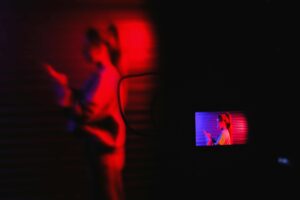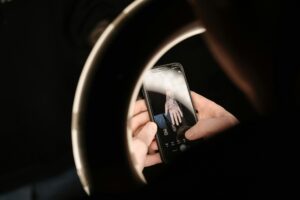The mobile photography trend is increasing day by day, where selfies are more popular. People use smartphones to capture everyday moments. But even a good smartphone can capture quality photos in daylight that may not be as good at night. Sometimes, low-light photography can be challenging for even the most experienced photographers. A good smartphone with a high megapixel camera alone is not sufficient to capture low-light photos. It requires additional features.

But ever you think?
- What are the challenges that actually do we face in low-light photography with the smartphone?
- How can you overcome these challenges?
- what features of your phone can fulfill low-light photography requirements?
Before going ahead, you must understand the challenges that you face while capturing photos in low light conditions. Because, by understanding actual problem can help to improve the solution!
Low-Light Photography challenges
Limited light: The most obvious challenge in low-light situations is the lack of sufficient illumination. With less light available, cameras struggle to capture enough information to produce well-exposed and detailed images. This can result in underexposed, dark, and muddy photographs that lack vibrancy and clarity.

Image Noise: When shooting in low light, cameras often compensate by increasing the sensor’s sensitivity (ISO) to capture more light. However, higher ISO settings can introduce unwanted digital noise, which appears as grainy, speckled patterns in the image, degrading its quality and sharpness.
Motion Blur: In low-light environments, longer shutter speeds are often required to allow enough light to reach the sensor. This increased exposure time increases the risk of capturing motion blur, rendering moving subjects or camera shake as streaks or ghosting effects in the final image.
Focusing Difficulties: Autofocus systems can struggle to accurately lock onto subjects in low-light conditions. This can lead to soft, out-of-focus images, especially when shooting moving subjects or in situations with limited contrast or depth.

Color Accuracy: Low-light situations can adversely affect color rendition, often resulting in muted or skewed colors that fail to accurately represent the true tones of the scene. This can be particularly challenging when shooting in mixed lighting conditions, such as a combination of artificial and natural light sources.
Tips to improve low light photography
Here are tips and techniques for low-light photography with smartphones:
Adjusting Exposure
- Use your smartphone’s manual mode (if available) to adjust exposure settings like shutter speed, ISO, and white balance for better control in low light.
- Tap to expose for your subject, locking the focus and exposure before taking the shot.
- Enable HDR mode to capture multiple exposures and merge them, preserving details in highlights and shadows.
Using Night Mode
- Many modern smartphones have a dedicated Night mode that takes multiple exposures and combines them using computational photography.
- Night mode significantly reduces noise and brightens the scene in low light conditions.
- Keep the phone very still or use a tripod when using Night mode as it combines multiple long exposures.
Stabilizing the Phone
- Use a mini tripod or prop the phone on a stable surface to avoid camera shake from hand movements during long exposures.
- Engage the camera’s built-in optical or electronic image stabilization if available.
- Use a camera remote/shutter button to trigger the shot without introducing movement from physical button presses.
Using External Lighting
- Use continuous LED video lights designed for smartphones to illuminate your subject.
- Try bouncing a flashlight or other light source off walls/ceilings for softer, diffused lighting.
- Utilize available light sources like lamps, candles or even the flashlight from another phone.

Post-Processing
- Use photo editing apps to further enhance details, reduce noise, adjust exposure/contrast in your low-light shots.
- Apply noise reduction and sharpening to compensate for high ISO noise.
- Experiment with RAW image files which contain more image data to recover highlight/shadow details.

As mentioned above, Limited light conditions for photography are the main challenge. And to overcome this challenge to get brighter and clearer photos at night, you’ll need additional lights. But most smartphones lack built-in light functions for the front camera.
Carrying an external light addon might not always be convenient. And There are more people that they don’t want to hassle with an external light addon.
The second way to solve this problem you can use your smartphone’s camera features that can allow you to take pictures at low light.
But, do you know? what features of your phone can fulfill low-light photography requirements?
Here are main camera features of the phone that can help you capture great photos in low-light conditions:
Large sensor size: Larger sensors are better at capturing light, which results in brighter and clearer photos in low light.
Night mode: Night mode is a feature that helps to improve the quality of photos taken in low light by taking multiple exposures and combining them into a single image.
Optical image stabilization (OIS): OIS helps to reduce blur caused by camera shake, which is especially important in low-light conditions when shutter speeds are slower.
Fast aperture: A fast aperture (low f-number) allows more light into the camera sensor, which can improve low-light performance.
Multiple lenses: Some phones have multiple lenses, such as a wide-angle lens and a telephoto lens. The wide-angle lens typically has a larger aperture and is better suited for low-light photography.
If your phone doesn’t meet the criteria then you can Upgrade your phone to the Tecno Pova 6 Pro. This smartphone is better option if your existing phone haven’t all or any one of them feature.
Tecno Pova 6 pro camera features
Powerful Rear Camera System
- 108MP main sensor with Electronic Image Stabilization
- 2MP depth sensor
- AI camera sensor for enhanced lighting and depth
32MP Front Camera with Innovative Design
- Unique front LED flash hidden within the display’s bezel
- Multiple Shooting Modes
- 3X in-sensor zoom
- 10x total zoom
- Sky Shop
- 2K Time Lapse
- Slow Motion
- Dual Video
- Portrait Mode
- Super Night Mode
Tecno Pova 6 Pro Low-Light Photography Features
108MP Main Sensor: While megapixel count isn’t everything, a higher resolution sensor can capture more light details in low-light situations.

Electronic Image Stabilization (EIS): EIS helps reduce blur caused by camera shake, which is more likely in low-light when shutter speeds are slower.
Super Night Mode: This mode is specifically designed to improve image quality in low-light conditions. It likely combines multiple exposures and processing techniques to create a brighter and clearer image.
AI Camera Sensor: While the exact functionality is unclear, the AI sensor could potentially analyze the low-light scene and adjust camera settings for better results.
32MP Front Camera with Front LED Flash: The front LED flash can provide additional illumination for selfies and close-up shots in low light.
Conclusion
Low-light photography challenges like limited light, noise, motion blur, and focusing issues can be conquered with the right smartphone camera features and techniques. Leveraging large sensors, fast apertures, night modes, optical image stabilization, and AI computational photography allows you to capture stunning low-light images.
The Tecno Pova 6 Pro exemplifies this cutting-edge camera technology with its 108MP main sensor, electronic image stabilization, super night mode, AI capabilities, and innovative 32MP front camera with LED flash – engineered for low-light conditions.
As mobile photography trends continue to soar, low-light performance will be crucial. By mastering low-light shooting with the latest advancements, you can turn nighttime scenes into breathtaking visual storytelling opportunities with your smartphone camera.
Hope you like this post. If anything doubtful don’t hesitate to contact us or comment below. Thank you.
You May Also Like: techDemis Blog.